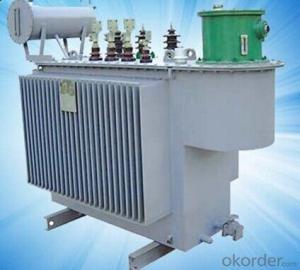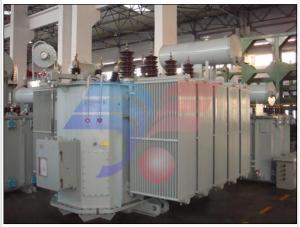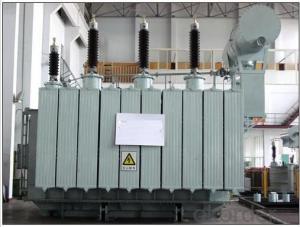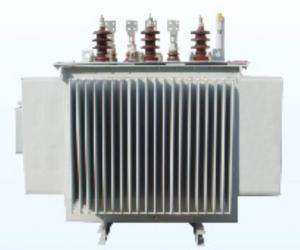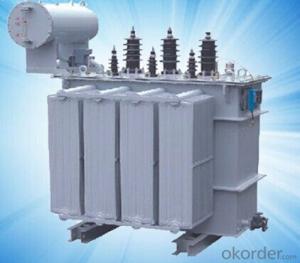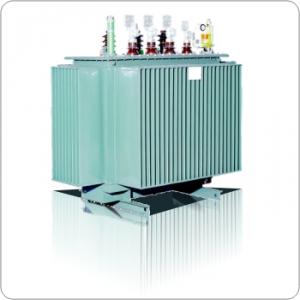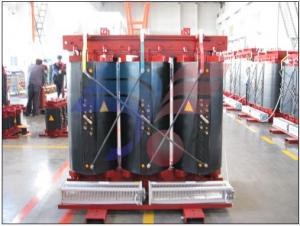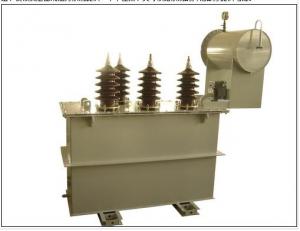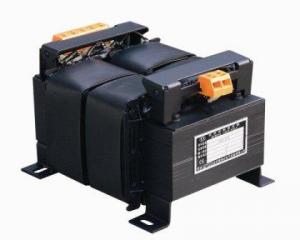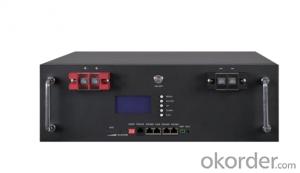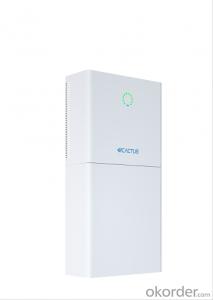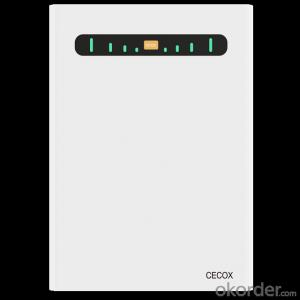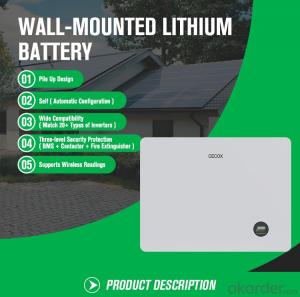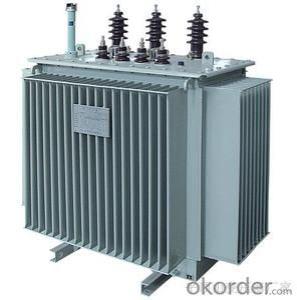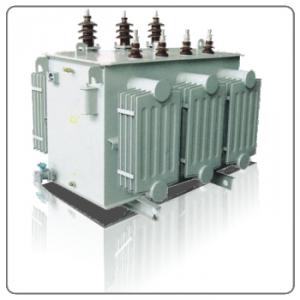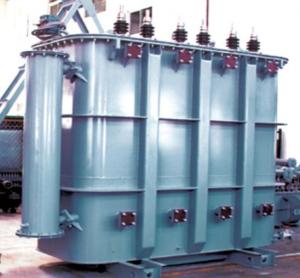SZ9-200~2500/11KV Three Phase On-load Pressure Regulating Power Transformer
OKorder Service Pledge
OKorder Financial Service
You Might Also Like
SZ9-200~2500/11KV three phase on-load pressure regulating power transformer is suitable for distribution saatem with 10KV,50HZ for industrial and mine enterprise ,power illumination .it confirms to GB1094<power transformer> standard.
SZ9-200~2500/11KV three phase on-load pressure regulating power transformer.can ajust automatically volatage underload condition according to electric grid voltage fluctuation to improve power supply quality,its performance parameter reaches international advanced level of 90s similar product,it has strongpoint of advanced workmanship,novel design.nice appearance and less groung demand.
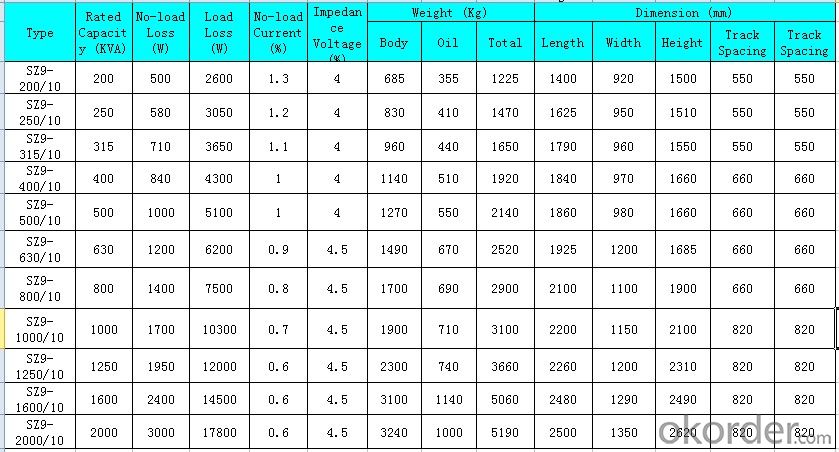
- Q:My device has 50KW should be used with much transformer
- Equipment is 50KW? That is to say there are other electrical appliances, you put all the power are considered, a total of how much KW, must start the current is 16 times the original current ah.
- Q:I will vote for the best answer based on the use of simple vocabulary, I don't know much about transformers so try to keep it as understandable as possible. I know it's not a simple subject, thanks!
- Interesting topic!
- Q:What are the ways of protecting the transformer?
- First, the gas protection: to protect the transformer internal short circuit and oil surface failure. Second, differential protection, current quick-break protection: to protect the transformer winding or lead-out phase of the phase-to-phase short circuit, large ground current system grounding short circuit and winding turn short circuit. Third, over-current protection: to protect the external phase short circuit, and as a gas protection and differential protection (or current quick-break protection) backup protection. Four, zero sequence current protection: protection of large ground current system external single-phase ground short circuit. 5, overload protection: to protect the symmetrical overload, only acting on the signal. Six, over-excitation protection: to protect the transformer over-excitation does not exceed the allowable limit.
- Q:I have a 240v-5v transformer for recharging, and it makes an annoying very high-pitched squeaking noise. What causes the noise?
- SQUEEK? That sounds like a high (audio) frequency oscillator. So this sounds like a pulsed regulator, not like a transformer-type power supply. I would guess that your unit is measuring the battery voltage, then applying a pulse of power to charge the battery, then checking the voltage again in a continuous sequence. This would be a switching type charger. 5 Volts - sounds like a personal electronics unit, for instance a cell phone or personal entertainment. Right? 240 Volts - Sounds like Europe. Right? (In America it would either be 120 Volts or some switching supplies are designed to operate from 90 to 250 Volts.)
- Q:Transformer tap adjustment there are several ways? What are the advantages and disadvantages?
- 1, no excitation adjustment or no taps. 2, with taps. Their advantages and disadvantages are as follows: 1, no taps: taps when the transformer must be shut down after the power, the advantages of safe and reliable, but the disadvantage is to adjust inconvenient, and often because the tap position can not meet the needs of less. 2, with taps Advantages: easy to adjust, do not have to turn off the transformer power can be adjusted, and the general tap position more easily meet the requirements. Disadvantages: due to load adjustment prone to problems, high cost, compared with the same capacity transformer volume, taps device maintenance needs a long time to blackout.
- Q:how to ground transformers at substations??
- copper rod pounded into the ground with a wire going to the terminal that is ground on the transformer.
- Q:A I have a 230V/12V, 3A step-down transformer. What will happen at primary side of transformer if I attach a 12V/5A device at secondary side? Will primary side attributes (such as voltage or current) change?
- The primary will pull 261mA. more than likely, you won't see anything like voltage drop on the primary or secondary, but you will see (maybe) thermal stress on the transformer as you're exceeding it's VA rating. If you cool the unit properly, it could last indefinitely.
- Q:How does a step down transformer decrease the output voltage but increases the output current? And how does the step up transformer does the opposite thing?
- Transformers function as electrical gearboxes to give an analogy. The product of current through the winding and voltage across the winding is the same for both the input winding and the output winding, due to conservation of energy. Transformers trade voltage for current, while, if ideal, preserving transferred power. The way a transformer works, is that when there is a changing magnetic field produced by the input winding (due to a derivative of current through this winding) induces a voltage across the output winding, as per Faraday's law of induction. Because of the self-inductance of the input winding, since it is after all an inductor, the voltages across both windings are both in phase. The higher the frequency used, the better and more efficient the transformer works. To make them work at lower frequencies, it is necessary to make bigger overall windings with larger inductance values. The stepping ratio is set by the number of coils of wire in both windings. The number of coils on the output winding divided by the number of coils on the input winding gives the stepping ratio. Should the stepping ratio be greater than 1, it is a step-up transformer. Should the stepping ratio be less than 1, it is a step-down transformer. Should the stepping ratio be equal to 1, it is called an isolating transformer.
- Q:I need to get a transformer that produces 12 watts. Problem is that I burned out the previous 2 I had with my hot wire cutter. I have a couple of 9 watt and 3 watt transformers. Is there anyway I can combine them together so that I can produce the desired 12 watts. I was thinking about rectifying to DC. Then putting the power sources in parallel to power my hot wire cutter. Is this a good idea or is there another way to do it.
- no, connecting two transformers together, unless they are identical, doesn't work. The one with the higher voltage will see the others as low impedances and try to drive them, with the result of a burned out transformer. But if you rectify each one to DC, the diodes will prevent the lower voltage ones from overloading the higher voltage one, but you will still have a problem in that the higher voltage one will be the only one delivering any power. .
- Q:I need a transformer to use american electronics in Ireland, any websites that sell Type G transformers?
- You need a step-down transformer to reduce the 230 VAC to 115 VAC for your American devices. The web site below is one good source. It has transformers to step voltages up or down. A transformer is the best way to go as opposed to a voltage converter that just uses a voltage drop. Make sure the transformer you get has enough power capacity to supply everything you want to connect to it.
1. Manufacturer Overview |
|
|---|---|
| Location | |
| Year Established | |
| Annual Output Value | |
| Main Markets | |
| Company Certifications | |
2. Manufacturer Certificates |
|
|---|---|
| a) Certification Name | |
| Range | |
| Reference | |
| Validity Period | |
3. Manufacturer Capability |
|
|---|---|
| a)Trade Capacity | |
| Nearest Port | |
| Export Percentage | |
| No.of Employees in Trade Department | |
| Language Spoken: | |
| b)Factory Information | |
| Factory Size: | |
| No. of Production Lines | |
| Contract Manufacturing | |
| Product Price Range | |
Send your message to us
SZ9-200~2500/11KV Three Phase On-load Pressure Regulating Power Transformer
OKorder Service Pledge
OKorder Financial Service
Similar products
New products
Hot products
Related keywords
